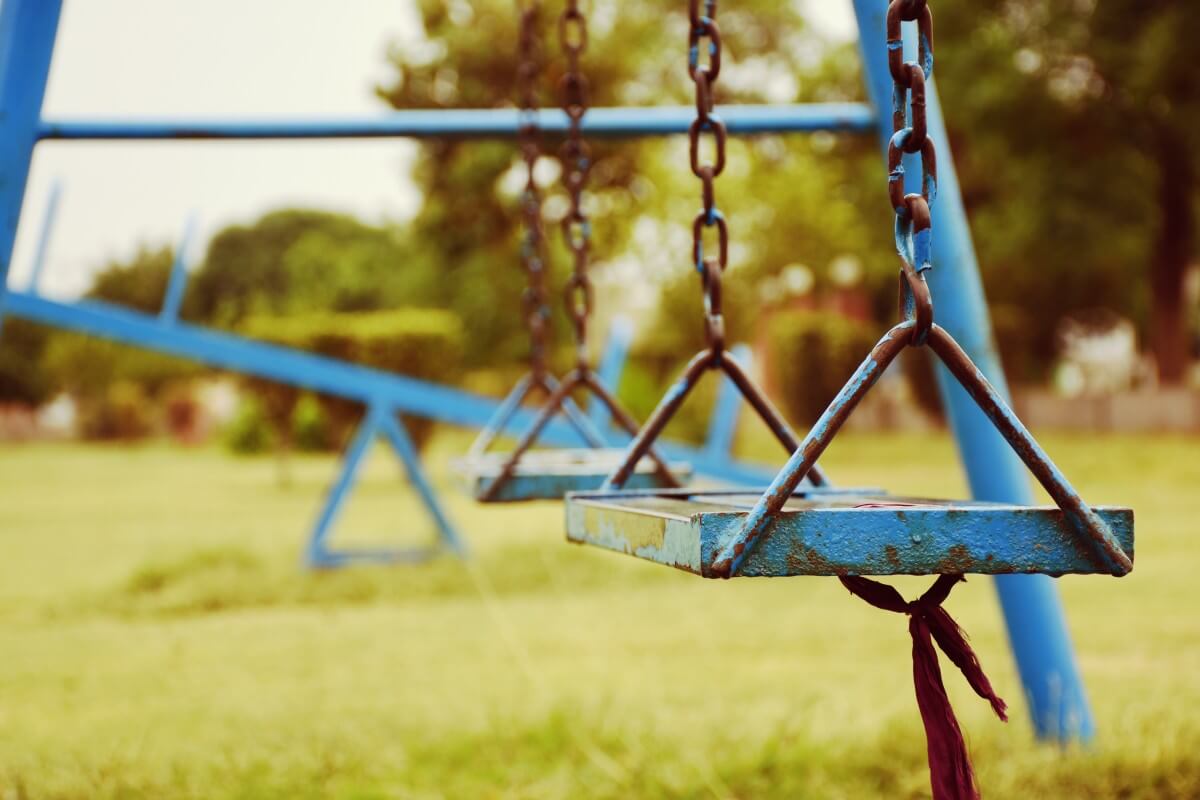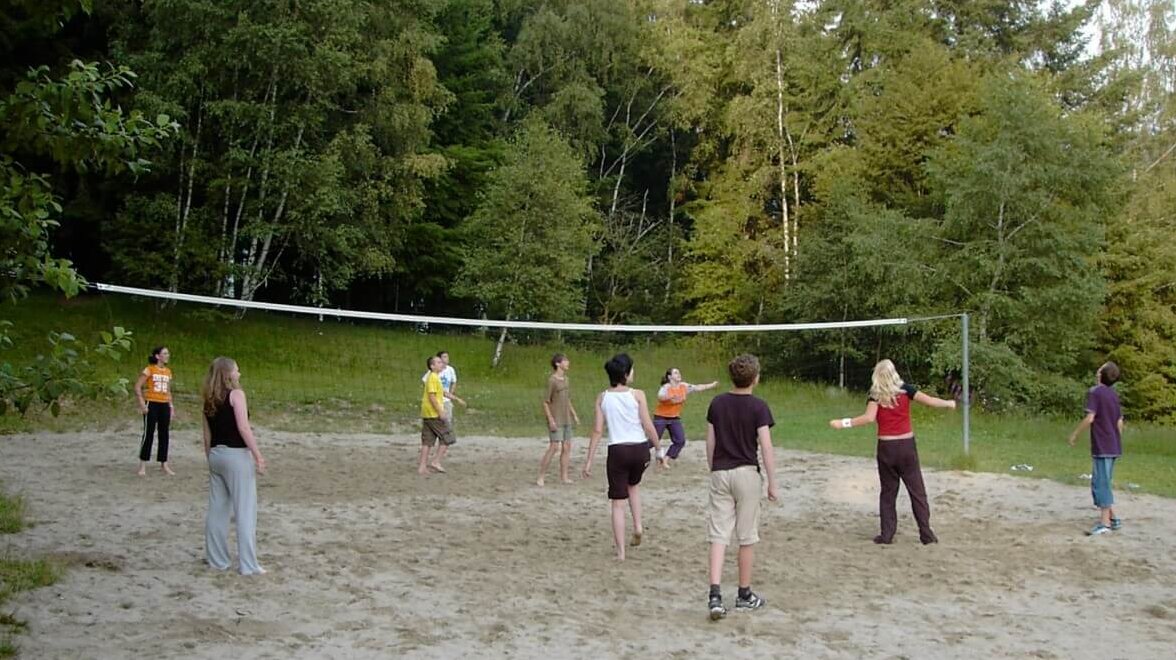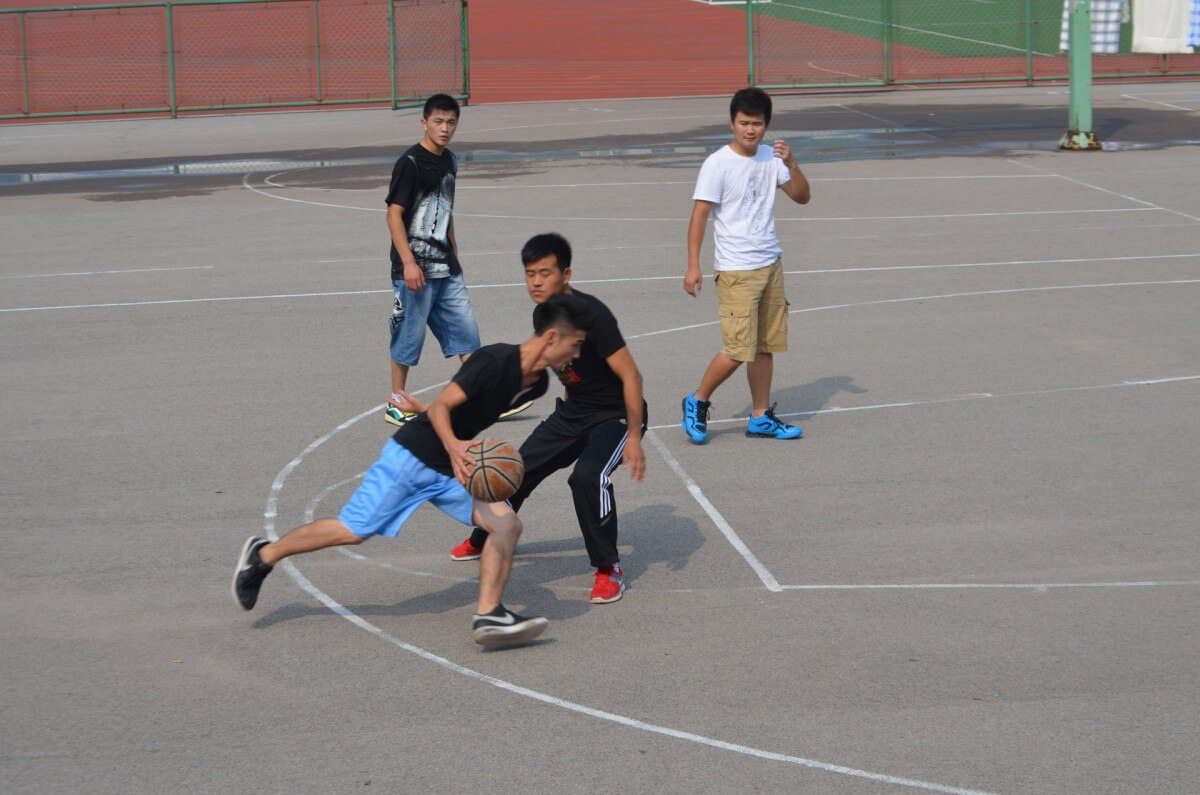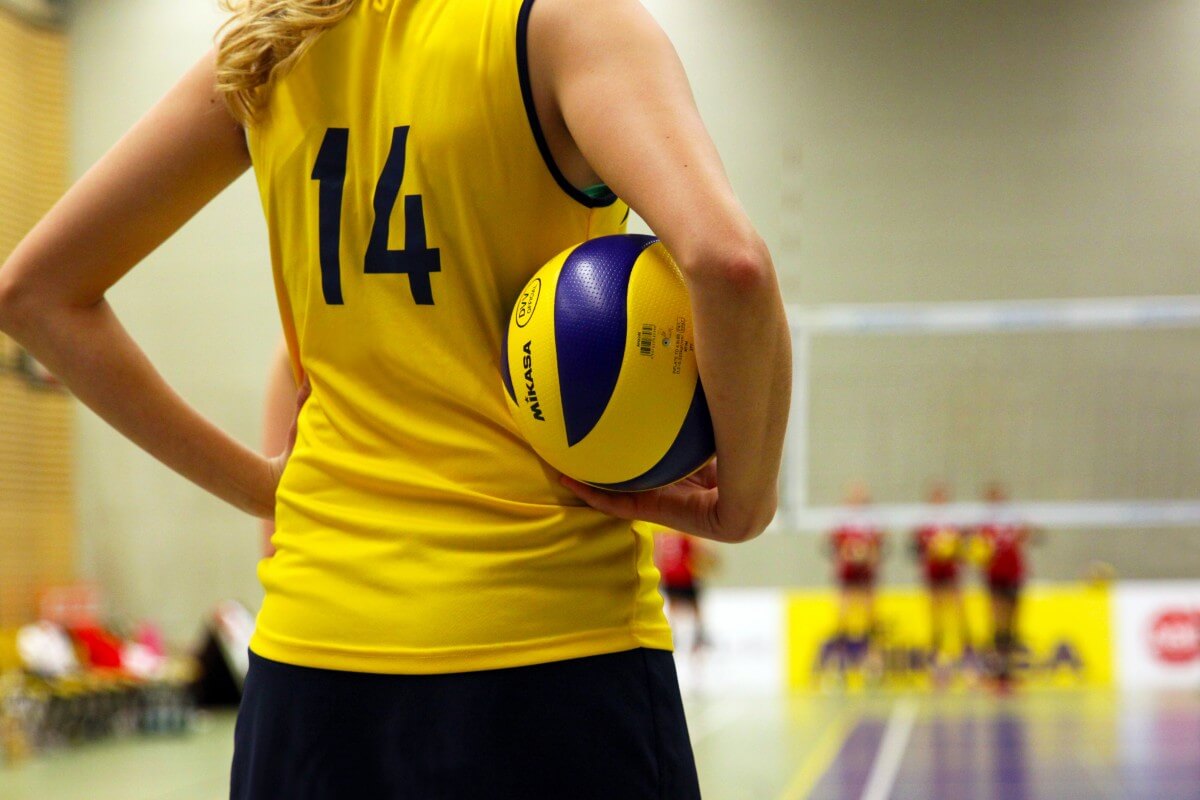
If one were to visit a city park today, compared to thirty years ago, they may not find many similarities. At least not as many similarities as differences. Children exploring their imaginations and allowing themselves to play freely has become a thing of the past. Instead, children may be located in a spot where the parents pay a registration fee in order for their children to participate or sitting in their homes not allowed to leave, or maybe a few playing at the local city park. In today’s age, there are so many extrinsically motivating factors that catch the eyes of parents who think it puts their children at an advantage in an ever so competitive environment. This motivates parents to get their children involved, if they have the financial resources, in all the activities they can to make their child the “best.” This begs the question, is it really the best thing for them?
 The Numbers
The Numbers
According to Sabo et al. (2008), in 2008, 69% of girls and 75% of boys aged 6-9 reported participating in an organized sport over the course of one year. Recent reports indicate that 67% of boys and 47% of girls are on a team by age six (Meredith, 2018). This may seem to be a high percentage, but one has to wonder what the percentages would look like if parents/society were not so forceful in getting kids involved with youth sports too young. The most recent information indicates that the average length of years in participation of children ages 3-18 is less than three years and that 80% of young athletes have quit sports after age fifteen (The Aspen Institute, 2017).

Physical activity is a necessity for an individual’s overall health (Tremblay et al., 2015), but how it is approached plays a factor if individuals will continue to live a physically active lifestyle or not, based on their past experiences. When children play, they are developing and asserting autonomy; a beneficial skill for adolescents to build on at a young age to help search and realize where their interests lie (Bishop, 2013). However, when parents/society pressure children and families into signing up for a sport at a premature age, where it can exceed a child’s cognitive and physical development, the child may develop feelings of failure and frustration towards that sport or physical activity in general (Washington et al., 2001).

Unstructured play may be a foreign concept for youngsters today. Many parents chase the belief that the earlier their children are involved in organized sports, the better they will become, and at a faster rate (O’Sullivan, 2014). This belief creates a sense of urgency for other parents to follow the same path in fear of their kids falling behind (Benson & Strand, 2014). The entire line of thinking may simply be the result of oblivious parents lacking understanding of the benefits that come with unstructured play for adolescents and youth.

Benefits of Unstructured Play
From an outside perspective, unstructured free play may simply look like ‘kids being kids’. However, what is happening within their body and mind is where it becomes beneficial for the individuals involved. Unstructured play is defined as child-led play which has no specific outcome or rules in mind, allowing for children to work on decision-making and discovery on their own (Houser et al., 2016). According to Bishop (2013), children are gradually expanding their worlds through play and developing problem solving and social skills. It gives adolescents the chance to discover and explore without having the pressure of following particular rules or goals, which allows children to take part in play, however they see fit (Houser et al.).
Unstructured free play should be encouraged for all children as it can enhance the enjoyment of sport through their own creativity and spontaneity. For example, street hockey, driveway basketball, sandlot baseball, playground soccer, and neighborhood games are monitored by age-adapted rules, are intrinsically motivating, and are created to maximize enjoyment (Russel & Limle, 2013).

According to The Aspen Institute (2017), unstructured free play is positively correlated with all-around sport performance. Some athletes envision these unstructured play opportunities as an avenue to achieve a competitive edge on their opponents where it could transfer to a structured competitive atmosphere (Shannon, 2017). Free play also has the potential to positively impact a child’s physical, emotional, social, and cognitive well-being (Tremblay et al., 2015). Unstructured free play should be, by its nature, intrinsically motivating since it allows children to access autonomy through their ability to choose their own activities (Kinder et al., 2019).
Parental Guidance
Parents have an enormous influence on what their children are exposed to throughout their adolescence and beyond. Parents are one of the most significant socialization agents responsible for the leisure interests and values their children develop (Shannon, 2017). According to Bishop (2013), adults who have complained that free play does not have any benefits say they can keep track of their children easier if they are involved in an organized activity or stay at home. Obviously true, but this results in parents loading up their children’s schedules with too many activities that may hinder their performance overall. But the reality is that free play is a child’s work; it is one of the most important ways children learn (Bishop, 2013). It is common for parents to make leisure decisions for their children based off of their interests or lack thereof, such as what activities their children will participate in and what travel team they will play for. Similarly, parents make decisions for their children based on perceptions of benefits linked with certain activities (Shannon, 2017). For example, a team being coached by a well-known coach or by a team with parents with social influence.

But how can parents properly help guide their children through the benefits in physical activity with the best interest of the child in mind? Parents have an influence on the adolescents’ leisure choices, leisure values, and their ideas about roles that leisure time and activities play throughout their lives (Shannon, 2017). If parents want their children to participate in unstructured play, the best way to foster the desired attitudes among children is by role modeling. But if fun and enjoyment are missing from parents’ lives, it will be hard for the children to develop values and attitudes, which motivate behavior, towards unstructured play when children are unsure of what that entails (Shannon, 2017). When parents better understand the consequences, their children face by controlling their activities, they (parents) are motivated to reduce their control and supervision and increase their willingness to allow children to engage in age-appropriate risk-taking and responsibility (Tremblay et al., 2015).

Many parents are constantly searching for the next best thing to set their children apart from others. It is well understood that wealthier families have more of an opportunity for their children to live physically active lives (The Aspen Institute, 2017). No doubt, organized sports can improve children’s physical and mental health along with increasing their physical activity (Chen et al., 2020). But according to Russel and Limle (2013), recent trends support the idea that organized youth sport involvement is replacing traditional forms of physical activity, such as unstructured play and modified forms of traditional sports. Children who come from lower socioeconomic status groups, are less involved in organized physical activity compared to the medium and higher SES groups, but the level remains consistent in participation in unorganized activities through the SES levels (Bengoechea et al., 2010).
Conclusion
When traditional youth physical activity opportunities are replaced, there are fewer resources for children to enjoy sport on their own (Normand et al.). According to Washington et al. (2001), a return to the days of free play has been suggested as the only way to eliminate the negative aspects of organized sports. Organized youth sports, in general, should complement, not replace, the regular physical activity that is part of free play, child-organized games, recreational sports, and physical education programs in schools (Washington et al., 2001). The American Academy of Pediatrics recommends that children spend at least one hour a day engaged in free unstructured play (Bishop, 2013). Children play outside less than their parents did growing up and children’s play has become more structured than ever before. Children and adolescents are being asked to take on more than they can handle when it comes to youth sports (Tremblay et al., 2015).
References
Bengoechea, E. G., Sabiston, C. M., Ahmed, R., & Farnoush, M. (2010). Exploring links to unorganized and organized physical activity during adolescence: the role of gender, soci- economic status, weight status, and enjoyment of physical education. Research Quarterly for Exercise and Sport, 81(1), 7-16.
Benson, D., & Strand, B. (2014). The challenge of sport entrapment. Arkansas Journal, 49(1), 17-22.
Bishop, R. (2013). Go out and play, but mean it: Using frame analysis to explore recent news media coverage of the rediscovery of unstructured play. The Social Science Journal, 50, 510-520.
Chen, C., Sellberg, F., Ahlqvist, V.H., Neovius, M., Christiansen, F., & Berglind, D. (2020). Associations of participation in organized sports and physical activity in preschool children: A cross-sectional study. BMC Pediatrics, 20, 1-328.
Houser, N. E., Roach, L., Stone, M. R., Turner, J., & Kirk, S. F. L. (2016). Let the children play: Scoping review on the implementation and use of loose parts for promoting physical activity participation. AIMS Public Health, 3, 781-799.
Kinder, C. J., Gaudreault, K. L., Jenkins, J. M., Wade, C. E., & Woods, A. M. (2019). At-risk youth in an after-school program: structured vs. unstructured physical activity. The Physical Educator, 76(5).
Meredith, J. (2018, Feb., 19). 15 eye-opening facts about youth sport. USA Football. Retrieved from https://blogs.usafootball.com/blog/1168/15-eye-opening-facts-about-youth-sports#:~:text=Sixty%2Dseven%20percent%20of%20boys,or%20more%20teams%20(ESPN).
Normand, J. M., Wolfe, A., Peak, K. (2017). A review of early sport specialization in relation to the development of a young athlete. International Journal of Kinesiology & Sports Science, 5(2), 37-43.
O’Sullivan, J. (2014, March 24). The race to nowhere in youth sports. Changing the Game Project. Retrieved from https://changingthegameproject.com/the-race-to-nowhere-in-youth-sports/
Russel, W. D., & Limle, A. N. (2013). The relationship between youth sport specialization and involvement in sport and physical activity in young adulthood. Journal of Sport Behavior, 36(1), 82-98.
Sabo, D., & Veliz, P. (2008). Go out and play: youth sports in America. Women’s sports foundation. New York: East Meadow.
Shannon, C. S. (2017). Parente’ messages about the role of extracurricular and unstructured leisure activities: Adolescente’ perceptions. Journal of Leisure Research, 38, 398-420.
The Aspen Institute. (2017). State of play 2017: Trends and developments. The Aspen Institute Project Play. Retrieved from https://www.aspeninstitute.org/wp-content/uploads/2017/12/FINAL-SOP2017-report.pdf
Tremblay, M. S., Gray, C., Babcock, S., Barnes, J., Bradstreet, C. C., Carr, D., Chabot, G., Choquette, L., Chorney, D., Collyer, C., Herrington, S., Janson, K., Janssen, I., Larouche, R., Pickett, W., Power, M., Sandseter, E. B. H., Simon, B., & Brussoni, M. (2015). Position statement on active outdoor play. International Journal of Environmental Research and Public Health, 12, 6475-6505.
Washington, R., Bernhardt, D., Gomez, J., Johnson, M., Martin, Y., Rowland, T., & Smali, E. (2001). Organized sports for children and preadolescents. Pediatrics, 107, 1459-1406.

Dear Dallas and Brad. What a great article! I can only second your arguments for unstructured play. As Athletic Directors, which I am a part of, our focus is heavily on organized sports, but we need to also create opportunities for free play, child-organized games and recreational sports ,as you have highlighted in your article. Very inspiring to read and definitely something I will take away and implement in our program! Thanks and have a great spring! Hans Engl (Athletic Director, International School of Zug and Luzern, Switzerland)
I enjoyed your article so much! I’ve been extolling the virtues of child-led play for over 30 years. As an elementary physicial education teacher for 31 years, I made sure to include one day of the week as a child-led “Fun Friday “! I provided a wide variety of equipment that allowed the children to choose what physical activity they would like to participate in during physical education class. I brought out footballs, basketballs, soccer balls, playground balls, jump ropes, hula hoops, pickleball equipment, tennis equipment, stilts, pogo sticks, sand toys for the sandbox, Chinese yo-yos, cones, spinning plates, stereo system for dancing, balance boards, etc. If I did my job during the week, by Friday they should know how to use and care for the equipment, practice good sportsmanship, be inclusive and tolerant and follow all of coach’s rules during class! It was my favorite day to watch the children enjoy physical activity with their peers and learn new skills at their own pace.
Coach Ben Avalos
El Paso, Texas
Ysleta Independent School District
This article is so correct. There are too many parents that do not allow children to just make up games to have fun. I teach 9th grade health and Phy. Ed and most of our athletes either participate in a sport almost all year or work at getting better at a specific sport when not in that sport season.
Too many athletes believe they will get a college athletic scholarship. In my opinion about 80% of athletes who do get a scholarship eventually quit for a variety of reason.